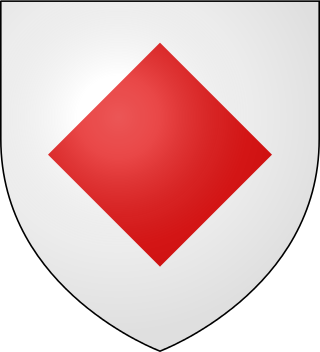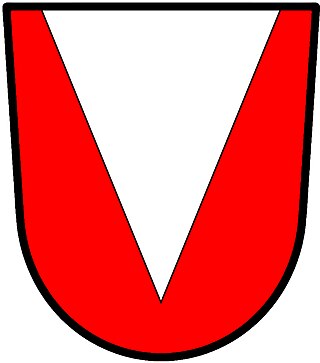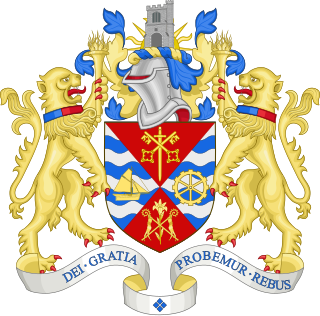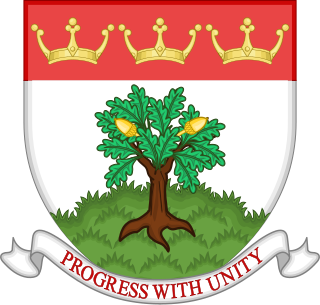
In heraldry, the field (background) of a shield can be divided into more than one area, or subdivision, of different tinctures, usually following the lines of one of the ordinaries and carrying its name. Shields may be divided this way for differencing or for purposes of marshalling, or simply for style. The lines that divide a shield may not always be straight, and there is a system of terminology for describing patterned lines, which is also shared with the heraldic ordinaries.

The lines in heraldry used to divide and vary fields and charges are by default straight, but may have many different shapes. Care must be taken to distinguish these types of lines from the use of lines as charges, and to distinguish these shapes from actual charges, such as "a mount [or triple mount] in base," or, particularly in German heraldry, different kinds of embattled from castle walls.

In heraldry, variations of the field are any of a number of ways that a field may be covered with a pattern, rather than a flat tincture or a simple division of the field.

The Metropolitan Borough of Hackney was a Metropolitan borough of the County of London from 1900 to 1965. Its area became part of the London Borough of Hackney.
Ordinaries in heraldry are sometimes embellished with stripes of colour alongside them, have lumps added to them, shown with their edges arciform instead of straight, have their peaks and tops chopped off, pushed up and down out of the usual positions, or even broken apart.

In heraldry, an ordinary is one of the two main types of charges, beside the mobile charges. An ordinary is a simple geometrical figure, bounded by straight lines and running from side to side or top to bottom of the shield. There are also some geometric charges known as subordinaries, which have been given lesser status by some heraldic writers, though most have been in use as long as the traditional ordinaries. Diminutives of ordinaries and some subordinaries are charges of the same shape, though thinner. Most of the ordinaries are theoretically said to occupy one-third of the shield; but this is rarely observed in practice, except when the ordinary is the only charge.

In heraldry, a charge is any emblem or device occupying the field of an escutcheon (shield). That may be a geometric design or a symbolic representation of a person, animal, plant, object, building, or other device. In French blazon, the ordinaries are called pièces, and other charges are called meubles.

The lozenge in heraldry is a diamond-shaped rhombus charge, usually somewhat narrower than it is tall. It is to be distinguished in modern heraldry from the fusil, which is like the lozenge but narrower, though the distinction has not always been as fine and is not always observed even today. A mascle is a voided lozenge—that is, a lozenge with a lozenge-shaped hole in the middle—and the rarer rustre is a lozenge containing a circular hole in the centre. A field covered in a pattern of lozenges is described as lozengy; similar fields of mascles are masculy, and fusils, fusily. In civic heraldry, a lozenge sable is often used in coal-mining communities to represent a lump of coal.

Edmonton was a local government district in north-east Middlesex, England, from 1850 to 1965.

The coat of arms of Portugal is the main heraldic insignia of Portugal. The present model was officially adopted on 30 June 1911, along with the present model of the Flag of Portugal. It is based on the coat of arms used by the Kingdom of Portugal since the Middle Ages. The coat of arms of Portugal is popularly referred as the Quinas.

Portuguese heraldry encompasses the modern and historic traditions of heraldry in Portugal and the Portuguese Empire. Portuguese heraldry is part of the larger Iberian tradition of heraldry, one of the major schools of heraldic tradition, and grants coats of arms to individuals, cities, Portuguese colonies, and other institutions. Heraldry has been practiced in Portugal at least since the 11th century, however it only became standardized and popularized in the 16th century, during the reign of King Manuel I of Portugal, who created the first heraldic ordinances in the country. Like in other Iberian heraldic traditions, the use of quartering and augmentations of honor is highly representative of Portuguese heraldry, but unlike in any other Iberian traditions, the use of heraldic crests is highly popular.

The coat of arms of Napoleonic Italy was the coat of arms used by the Kingdom of Italy (1805–1814) during the reign of Napoleon as King of Italy.

The Coat of Arms of Bradford City Council was granted in 1976. The present City of Bradford was created in 1974 by the Local Government Act 1972 and is one of five metropolitan boroughs of West Yorkshire. The 1976 arms are based on those of its predecessor, the County Borough of Bradford.

In heraldry and heraldic vexillology, a blazon is a formal description of a coat of arms, flag or similar emblem, from which the reader can reconstruct the appropriate image. The verb to blazon means to create such a description. The visual depiction of a coat of arms or flag has traditionally had considerable latitude in design, but a verbal blazon specifies the essentially distinctive elements. A coat of arms or flag is therefore primarily defined not by a picture but rather by the wording of its blazon. Blazon is also the specialized language in which a blazon is written, and, as a verb, the act of writing such a description. Blazonry is the art, craft or practice of creating a blazon. The language employed in blazonry has its own vocabulary, grammar and syntax, which becomes essential for comprehension when blazoning a complex coat of arms.

In heraldry, a pile is a charge usually counted as one of the ordinaries. It consists of a wedge emerging from the upper edge of the shield and converging to a point near the base. If it touches the base, it is blazoned throughout.

In heraldry, a bar is an ordinary consisting of a horizontal band across the shield. If only one bar appears across the middle of the shield, it is termed a fess; if two or more appear, they can only be called bars. Calling the bar a diminutive of the fess is inaccurate, however, because two bars may each be no smaller than a fess. Like the fess, bars too may bear complex lines. The diminutive form of the bar is the barrulet, though these frequently appear in pairs, the pair termed a "bar gemel" rather than "two barrulets".

The coat of arms of the London Borough of Barking and Dagenham is the official coat of arms of the London Borough of Barking and Dagenham, granted on 1 September 1965.

Coat of arms of the London Borough of Bexley is the official coat of arms of the London Borough of Bexley, granted on 20 May 1965.

The coat of arms of the London Borough of Camden were granted on 10 September 1965. The borough was formed by the merger of three former boroughs, namely the Metropolitan Borough of Hampstead, the Metropolitan Borough of Holborn and the Metropolitan Borough of St. Pancras, from whose arms elements were utilised in the arms of the new borough.

The coat of arms of the London Borough of Ealing is the official heraldic arms of the London Borough of Ealing, England, granted on 1 September 1965.


















